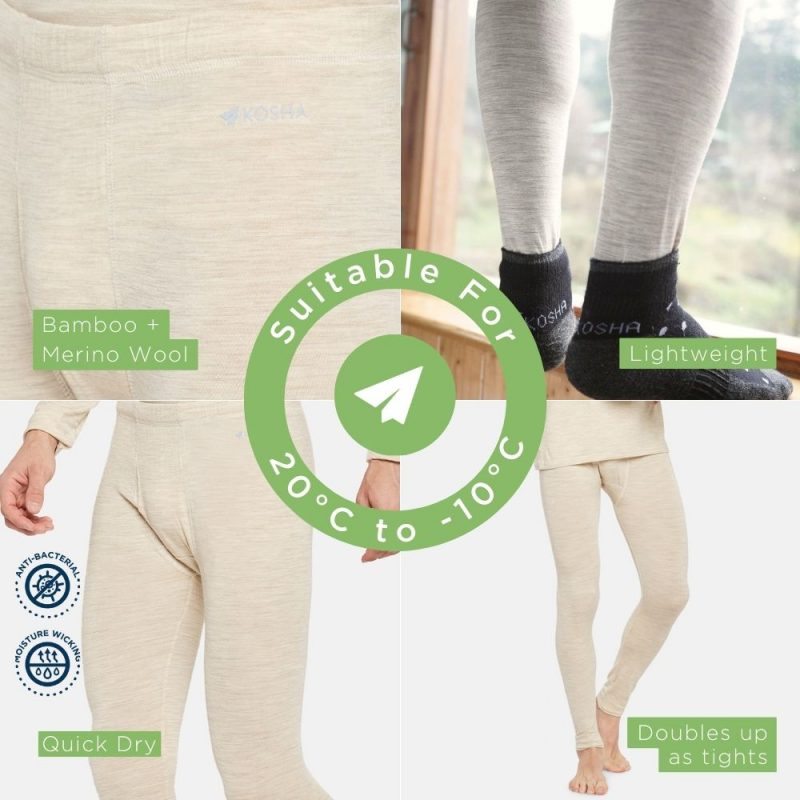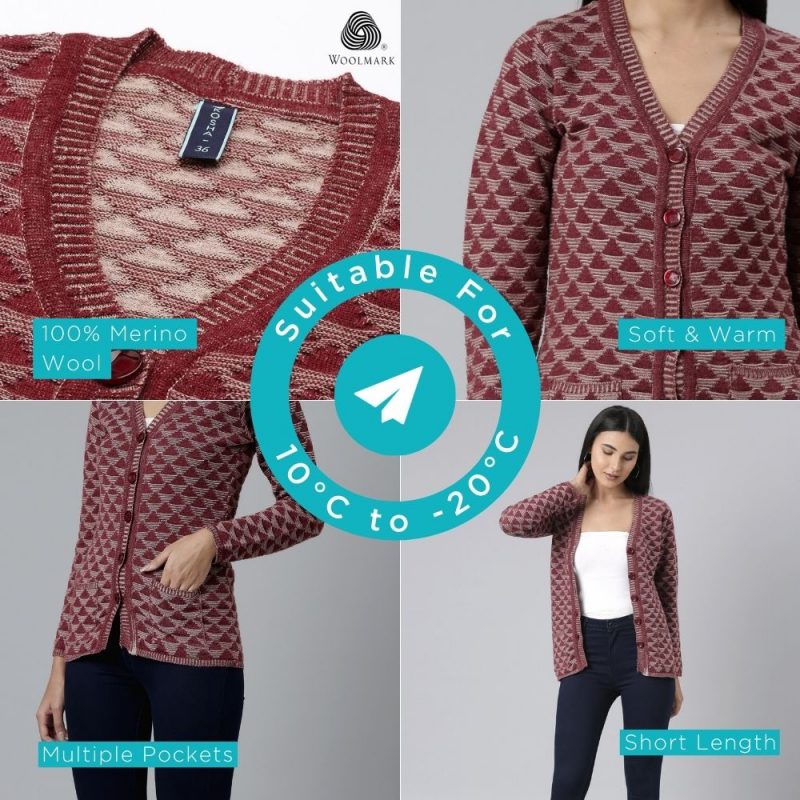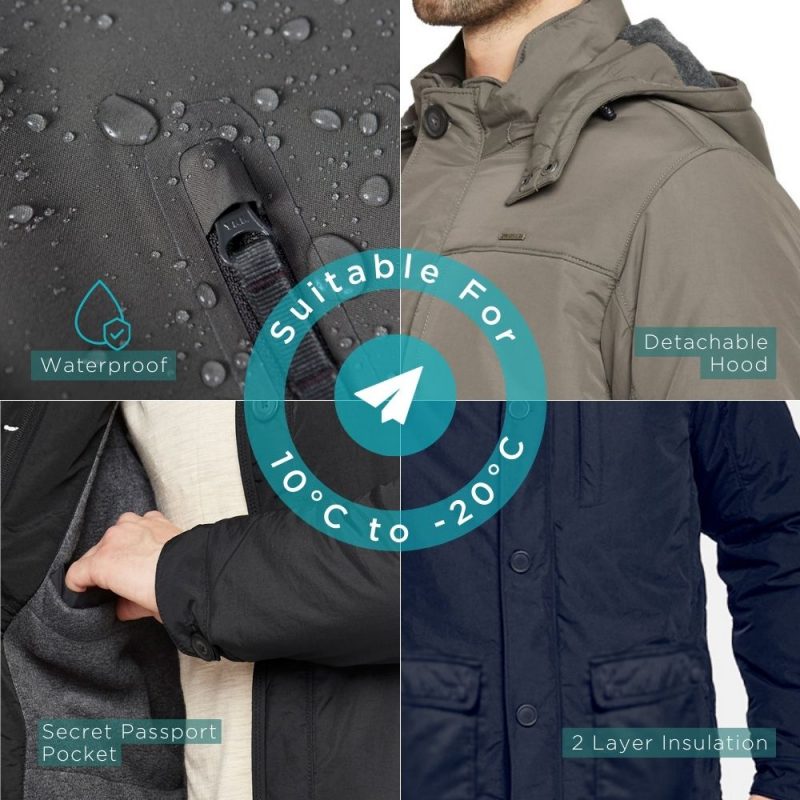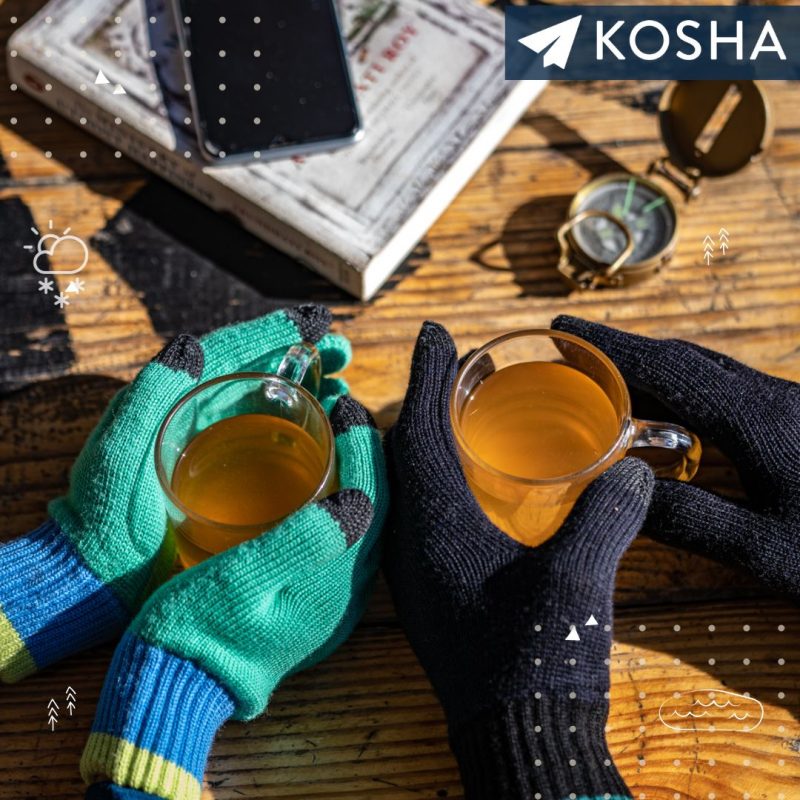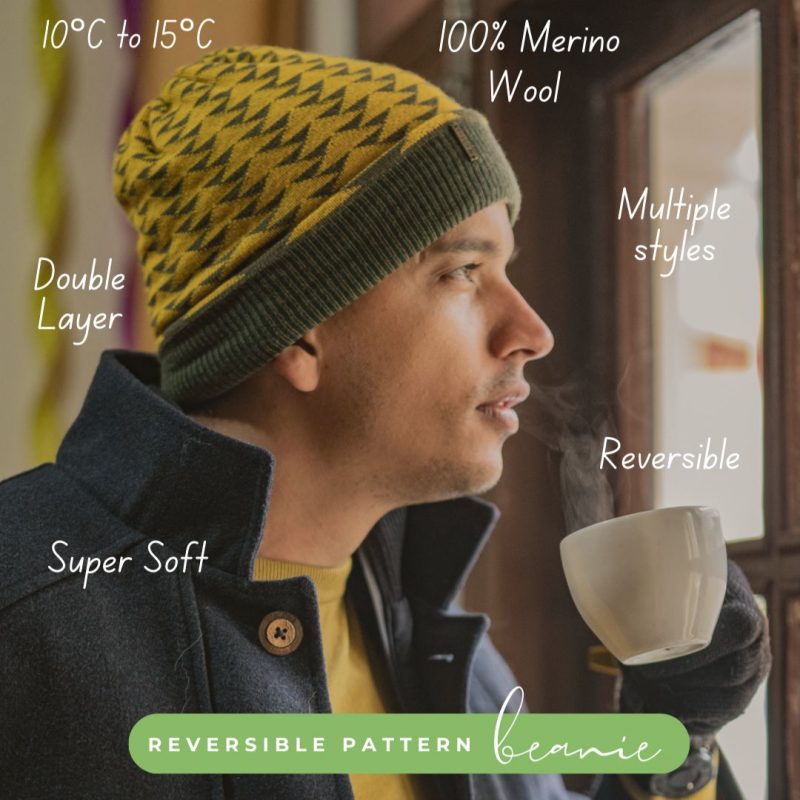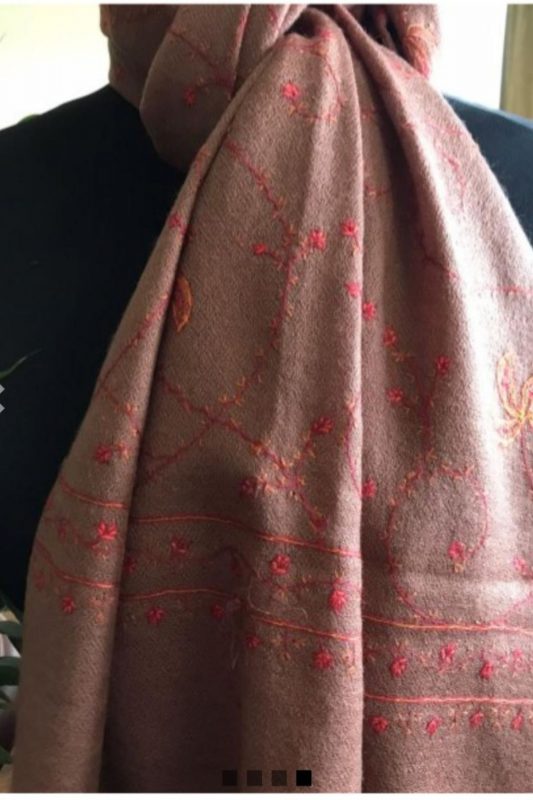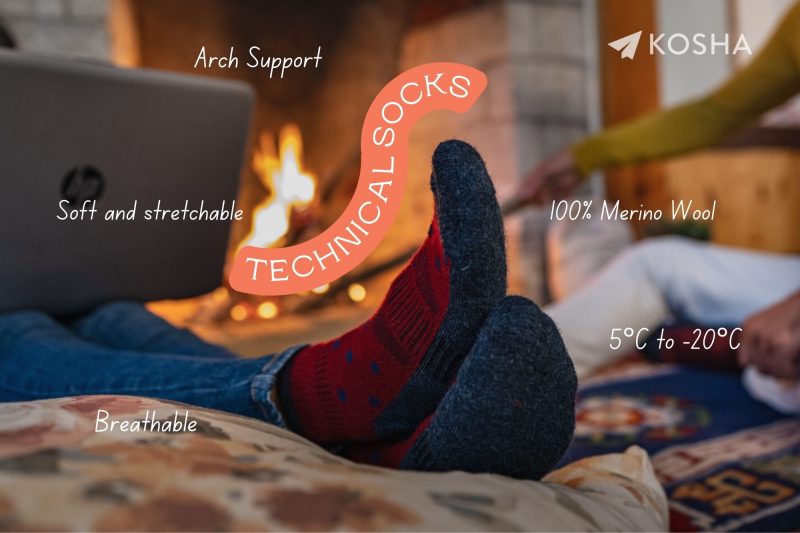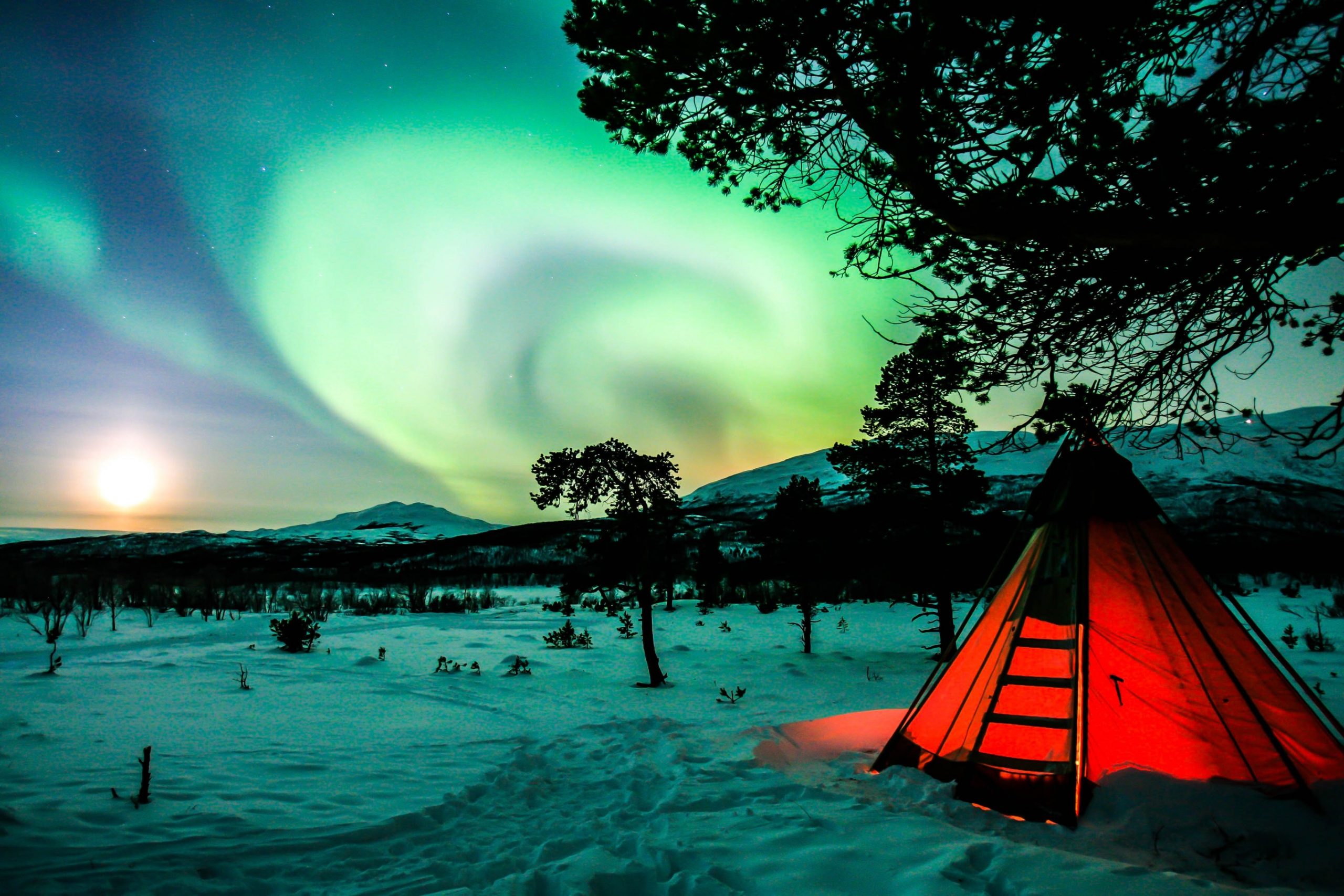
Stockholm, the capital of Sweden, is a captivating winter destination that seamlessly blends charming architecture with a rich tapestry of cultural offerings. As the temperatures drop and snow blankets the city, Stockholm transforms into a winter wonderland that beckons travelers with its unique blend of old-world charm and modern sophistication. One of the most enchanting aspects of Stockholm, Sweden in winter is its architecture.
The city’s historic Gamla Stan (Old Town) is a picturesque labyrinth of narrow cobblestone streets, colorful buildings, and medieval squares. When adorned with twinkling lights and a dusting of snow, it feels like stepping into a storybook. Stroll through this timeless neighborhood, visit the Royal Palace, and warm up in cozy cafes tucked away in centuries-old buildings.
Whether you’re exploring the historic streets of Gamla Stan, immersing yourself in world-class museums, or indulging in a comforting fika, Stockholm’s winter charm will leave you enchanted and longing to return for more. So, bundle up, embrace the cold, and discover the magic of Stockholm during the winter season.

Average Temperature in Stockholm, Sweden
Winter Climate in Stockholm: Embracing the Cold
Stockholm’s winter climate is a quintessential aspect of the city’s charm and allure during the colder months. While it might be tempting to seek warmth indoors, embracing the cold is an integral part of the Stockholm winter experience. Here’s a closer look at what you can expect from the winter climate and why it’s an essential element of the city’s identity:
- Temperature: Stockholm experiences a typical Scandinavian winter with temperatures often dropping well below freezing. The average daytime temperature hovers around 0°C (32°F), while nighttime temperatures can plummet to -5°C to -10°C (23°F to 14°F). However, it’s not uncommon for occasional cold snaps to bring even colder temperatures.
- Snowfall: Snow blankets the cityscape, turning Stockholm into a winter wonderland. From December to March, you can expect a substantial amount of snowfall, creating a picturesque setting reminiscent of a fairytale. The snow covers streets, parks, and buildings, adding to the city’s charm.
- Daylight Hours: Stockholm’s winter days are shorter, with daylight hours ranging from about 6 to 8 hours in December and January. This limited daylight adds a unique atmosphere to the city, making it even more magical when the streets are illuminated at night.
- Seasonal Traditions: Stockholm’s winter climate is intimately tied to Swedish traditions. Christmas markets, Lucia celebrations, and the lighting of Advent candles are cherished customs that define the winter season. These events bring people together to celebrate the beauty of winter and the warmth of community.
- Northern Lights: While Stockholm isn’t typically associated with the Northern Lights, the city’s northern location does occasionally allow for sightings of this natural wonder during the coldest, clearest nights. It’s an unexpected but magical addition to Stockholm’s winter climate.
In essence, the winter climate in Stockholm is about more than just enduring the cold; it’s about fully embracing and celebrating it. The city’s residents have mastered the art of making the most of the winter season, and as a visitor, you can immerse yourself in this enchanting atmosphere.
Base Layer: Keeping Dry and Insulated
Base layers are a crucial component of an effective layering system for outdoor activities, particularly in cold weather. They serve several important functions to help keep you comfortable and dry during your adventures. Here are the primary functions of a base layer:
- Moisture Management: One of the primary functions of a base layer is to wick moisture away from your skin. When you’re active, you can work up a sweat even in cold conditions, and if that moisture stays close to your skin, it can lead to discomfort and even hypothermia. Base layers are typically made from moisture-wicking materials (like synthetic fabrics or merino wool) that pull sweat away from your skin and onto the next layer, keeping you dry and reducing the risk of chilling.
- Temperature Regulation: Base layers help regulate your body temperature by keeping you warm when it’s cold and cool when it’s hot. In cold conditions, base layers trap a thin layer of warm air close to your skin, serving as insulation. Conversely, in hot conditions, they help cool you by wicking away sweat, which then evaporates, cooling you down.
- Insulation: Base layers can provide a degree of insulation, particularly if they are made of materials like merino wool, which has natural insulating properties. The trapped air between your skin and the base layer helps retain your body heat, keeping you warm in cold weather.
- Comfort: Base layers are designed to fit snugly against your skin without being constricting. This close-to-skin fit minimizes friction and chafing, enhancing overall comfort during activities like hiking, skiing, or cycling.
- Layering: Base layers are the first layer of your clothing system and play a crucial role in the layering strategy for outdoor activities. They provide a foundation upon which you can add additional layers (mid-layers and outer layers) to tailor your clothing to the specific conditions and your activity level. By regulating moisture and temperature close to your skin, base layers help the entire layering system function optimally.
Mid Layer: Trapping Heat Effectively
Sweden in winter can be quite cold, and effective insulation is essential to stay warm. However, you also want to avoid adding too much bulk to your clothing layers, especially if you’re active or if you’re exploring urban areas. Here are some options for mid-layers that provide effective insulation without adding excessive bulk for Sweden in winter:
- Fleece Jackets: Fleece jackets are a versatile choice for mid-layers in cold climates. They provide an excellent warmth-to-weight ratio, trapping heat close to your body without adding much bulk. Look for options with different fleece weights (e.g., lightweight, midweight) to tailor the insulation level to your needs.
- Synthetic Insulated Jackets: Synthetic insulated jackets, like those filled with PrimaLoft or similar materials, are designed to provide warmth even when wet. They are lightweight and compressible, making them an excellent choice for mid-layers. These jackets often have a low-profile design that won’t add bulk under your outer layer.
- Thin Puffer Jackets: Some thin puffer jackets are designed specifically as mid-layers. These jackets use lightweight insulation and have a slim profile. They can be worn comfortably under a shell jacket or over a base layer.
- Merino Wool Sweaters: Merino wool is known for its natural insulating properties, and merino wool sweaters can be an excellent choice for a mid-layer. They are thin yet warm, moisture-wicking, and provide good temperature regulation. Merino wool also has the benefit of odor resistance.
- Softshell Jackets: Softshell jackets with a thin fleece lining can serve as effective mid-layers. They offer some insulation while providing wind and water resistance. Softshell materials are often stretchy and can conform to your body, reducing bulk.
Be sure to choose mid-layers that are compatible with your shell jacket to ensure optimal performance in Sweden in winter conditions. Additionally, layering allows you to adjust your clothing to your activity level and the temperature, providing flexibility throughout your winter adventures.
Outer Layer: Shielding Against the Elements
A waterproof and windproof outer layer is of paramount significance when braving the snowy and chilly winters in Sweden. Here are several key reasons why this type of outerwear is essential for protection and comfort:
- Weather Protection: Sweden’s winter weather can be quite harsh, with heavy snowfall and chilly winds being common occurrences. A waterproof and windproof outer layer acts as a shield against these elements, keeping you dry and warm. This protection is particularly crucial in wet, slushy snow conditions or when facing freezing rain.
- Keeps You Dry: Snow, sleet, and freezing rain can soak through regular clothing, leading to discomfort and increasing the risk of hypothermia. A waterproof outer layer prevents moisture from penetrating your clothing, ensuring you stay dry even in wet conditions. It also helps maintain the effectiveness of your insulating layers, which can lose their warmth-retaining properties when wet.
- Wind Protection: Wind is a significant factor in the cold of Swedish winters. It can make the temperature feel much colder than it actually is and can lead to wind chill. A windproof outer layer creates a barrier against the chilling effects of the wind, allowing your body to retain heat more effectively.
- Maintains Comfort: Staying dry and protected from the wind is essential for maintaining comfort during winter activities. Whether you’re exploring cities like Stockholm or engaging in outdoor winter sports, a waterproof and windproof shell helps you stay warm and cozy, allowing you to fully enjoy your experience.
- Safety: In extreme winter conditions, the combination of snow, wind, and low temperatures can pose a safety risk if you’re not adequately protected. Waterproof and windproof outerwear is not only about comfort but also about safety, helping to prevent frostbite and other cold-related injuries.
A waterproof and windproof outer layer is not just a luxury but a necessity when facing the snowy and chilly winters in Sweden. It offers protection, comfort, and safety in harsh weather conditions, allowing you to enjoy all that this beautiful country has to offer during the winter months while staying warm and dry.
Accessories for Full Coverage
Gloves
Gloves play a crucial role in keeping you comfortable and protected during the cold winter in Sweden.
- Hand Warmth: The primary function of gloves in winter is to keep your hands warm. When exposed to cold temperatures, your extremities, including your fingers, are more susceptible to frostbite and cold-related injuries. Gloves insulate your hands, trapping warmth and preventing heat loss.
- Protection Against Frostbite: In Sweden’s winters, temperatures can drop significantly, especially in the northern regions. Wearing gloves is essential to protect your fingers from frostbite, a condition that occurs when the skin and underlying tissues freeze. Properly insulated gloves prevent this painful and potentially serious cold injury.
- Moisture Management: Gloves can help manage moisture by keeping snow and sleet from coming into direct contact with your skin. Wet hands can lead to discomfort, reduce insulation effectiveness, and increase the risk of frostbite. Waterproof or water-resistant gloves are particularly important for this purpose.
- Wind Protection: Wind can significantly increase the chill factor, making the air feel even colder than the actual temperature. Windproof gloves create a barrier against these chilling winds, adding an extra layer of protection for your hands.
- Safety: Gloves also play a safety role, especially when participating in winter sports or outdoor activities. They provide grip and protect your hands from abrasions, cuts, and other injuries.
- Fashion and Comfort: Beyond functionality, gloves can also be a fashion statement, complementing your winter attire. Many gloves come in stylish designs and colors, allowing you to express your personal style while staying warm. Comfortable gloves make your overall winter experience more enjoyable.
They play a vital role in preventing cold-related injuries, maintaining dexterity, and ensuring you can fully enjoy all the winter activities this beautiful country has to offer. Whether for practical reasons or as a fashion statement, gloves are a must-have item in your winter wardrobe in Sweden.
Beanies
Beanies, also known as knitted caps or winter hats, are essential accessories for winter in Sweden for several reasons:
- Protection from Cold Weather: Sweden experiences harsh winter conditions with extremely low temperatures, especially in the northern regions. Beanies provide crucial protection for the head and ears, helping to keep individuals warm and prevent frostbite during the cold months.
- Insulation: The head is one of the body’s primary sources of heat loss. Beanies help to retain heat by covering the head, which plays a significant role in overall body temperature regulation. Insulating the head is vital for staying comfortable and safe in Sweden’s cold winters.
- Comfort and Well-Being: Wearing a beanie in the winter can significantly enhance comfort and well-being. It helps to keep the head warm, which can prevent discomfort and headaches caused by exposure to extreme cold.
- Fashion and Style: Beanies have also become a fashionable accessory in Sweden during the winter. They come in various colors, styles, and designs, allowing people to express their individuality and sense of style while staying warm. Many Swedes incorporate beanies into their winter outfits as a fashion statement.
Scarves or Muffler
- Cold Weather Protection: Sweden experiences extremely cold temperatures during the winter months, and scarves or mufflers provide an extra layer of insulation for the neck and chest. They help trap warmth and prevent heat loss, which is crucial for staying comfortable and safe in the cold.
- Wind Protection: Scandinavia, including Sweden, is known for its strong winter winds. Scarves and mufflers act as a barrier against the biting wind, shielding the neck and face from wind chill. This protection is vital to prevent frostbite and maintain overall warmth.
- Layering: Layering is a key strategy for staying warm in cold climates. Scarves and mufflers can be easily added or removed depending on the temperature. They complement other winter clothing items such as coats, sweaters, and hats, allowing individuals to adjust their attire as needed.
- Fashion and Style: Scarves and mufflers are not just functional; they are also fashionable. In Sweden, as in many other countries, people use these accessories to add a pop of color, texture, and style to their winter outfits. They come in various colors, patterns, and materials, allowing individuals to express their personal style.
- Protection from Snow: Scarves and mufflers also serve as a barrier against snowfall, helping to keep snow from getting inside clothing and causing discomfort. This is particularly important when participating in outdoor activities like skiing or snowshoeing.
Socks
- Cold Weather Insulation: Sweden experiences extremely cold winters, with temperatures often dropping well below freezing. Socks are crucial for insulating the feet and keeping them warm. Proper insulation is vital to prevent frostbite and maintain overall comfort during the chilly season.
- Moisture Management: Cold weather can lead to increased moisture on the feet due to sweating or snow exposure. High-quality winter socks are designed to wick moisture away from the skin, keeping the feet dry. Dry feet are not only more comfortable but also help prevent issues like blisters and fungal infections.
- Foot Health: In Sweden, where winter is long and intense, foot health is a significant concern. Keeping the feet warm and dry is essential for preventing cold-related foot problems, such as chilblains. Socks serve as a protective barrier against the cold ground and snow.
- Boot Comfort: Many Swedes wear boots during the winter for added protection from the cold and snow. Socks provide cushioning and comfort within the boots, making them more suitable for prolonged wear in winter conditions.
Packing Essentials: Your Winter Stockholm Wardrobe
When preparing for a winter adventure in Stockholm, it’s essential to pack clothing items and accessories that will keep you warm, comfortable, and protected from the cold, snowy conditions. Here’s a checklist of essential items to ensure you’re well-prepared for your trip:
Clothing:
- Insulated Jacket: A warm and preferably waterproof or water-resistant outer layer to protect against snow and wind.
- Layering System:
- Base Layers: Moisture-wicking, thermal tops and bottoms to regulate temperature and moisture.
- Mid-Layers: Insulating options like fleece jackets, pullovers, or synthetic insulated jackets.
- Additional Layers: Consider an extra mid-layer for extremely cold days.
- Winter Coat: A heavy, insulated coat for extremely cold days or for long periods outdoors.
- Pants: Insulated, waterproof, or water-resistant pants to protect against snow and wet conditions.
- Thermal Underwear: An extra layer of warmth for extreme cold.
- Snow Pants (Optional): If you plan on engaging in winter sports like skiing or snowboarding.
- Socks: Thick, moisture-wicking, and warm socks. Consider packing several pairs.
- Boots: Insulated and waterproof or water-resistant winter boots with good traction.
- Hat: A warm, insulated hat or beanie to cover your head and ears.
- Gloves or Mittens: Insulated, waterproof, and windproof gloves or mittens to keep your hands warm and dry.
- Scarves and Neck Gaiters: To protect your neck and face from the cold winds.
Accessories:
- Warm Accessories: Pack extras like hand warmers and foot warmers for added warmth in extreme cold.
- Winter Hat with Ear Flaps (Optional): If you’re planning to spend extended time outdoors in very cold conditions.
- Sunglasses: To protect your eyes from the winter sun’s glare on snowy surfaces.
- Backpack: A backpack to carry your essentials during your winter adventures.
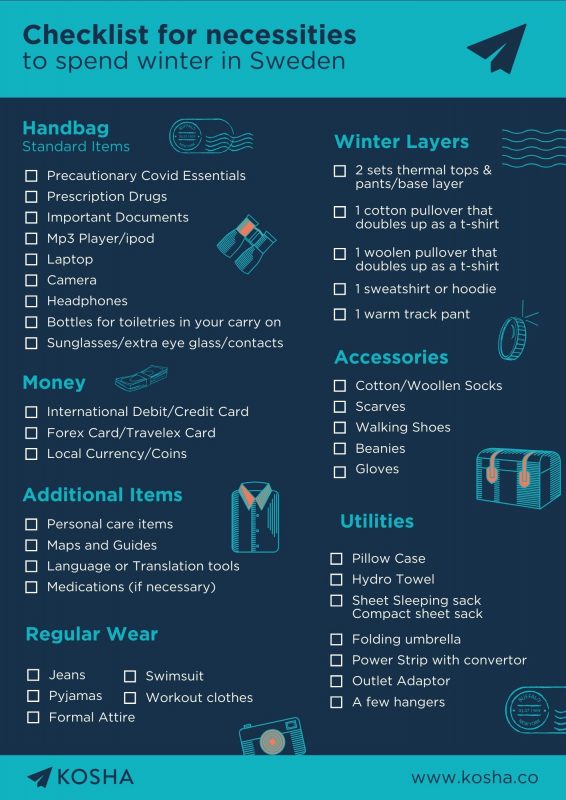
Checklist for Sweden in winter
Additional Items:
- Camera and Protective Gear: If you plan on capturing the winter beauty of Stockholm, ensure your camera and accessories are cold-resistant and protected.
- Power Banks: Cold temperatures can affect battery life, so having a power bank can be helpful for keeping your devices charged.
- Travel Adapters and Converters: If you’re traveling from abroad, ensure you have the right adapters and voltage converters for your electronic devices.
- Personal Care Items: Don’t forget essentials like lip balm, sunscreen (yes, even in winter), and moisturizer to combat dry skin.
- Travel Documents: Passport, visa (if required), travel insurance, and any other necessary documents.
- Medications: Any prescription medications you may need during your trip, as well as a basic first aid kit.
- Language Guide or Translation App: While many people in Stockholm speak English, having a language guide or translation app can be helpful.
- Maps and Guides: Maps of Stockholm, guidebooks, and any itineraries or reservation confirmations.
- Reusable Water Bottle: Staying hydrated is important even in cold weather.
- Cash and Cards: Currency and credit/debit cards for your expenses in Stockholm.
- Snacks: High-energy snacks for when you’re on the go and may not have access to food.
Remember to check the weather forecast for Stockholm before your trip to fine-tune your packing list based on the specific conditions during your visit. Layering is key to staying warm and adaptable in changing weather, so be sure to have a mix of clothing items for different temperature ranges.

Northern Lights
Attractions in Winter Sweden
Sweden is a beautiful country to explore in the winter, offering a range of attractions and activities that take advantage of its stunning landscapes and embrace the cold season. Here are some top attractions to consider during a winter visit to Sweden:
- Northern Lights (Aurora Borealis): One of the most mesmerizing natural wonders you can witness in Sweden during the winter is the Northern Lights. Head to northern regions like Abisko, Kiruna, or Jokkmokk for a chance to see these ethereal lights dancing across the night sky.
- Ice Hotels: Sweden is famous for its ice hotels, like the Ice Hotel in Jukkasjärvi. These unique accommodations are constructed entirely of ice and snow, providing an extraordinary winter experience. Even if you don’t stay overnight, you can visit these ice hotels and explore their impressive ice sculptures and designs.
- Dog Sledding: Experience the thrill of dog sledding in Lapland. You can take a guided tour through snowy forests and pristine landscapes while being pulled by a team of enthusiastic huskies.
- Snowmobiling: Snowmobiling is a popular winter activity in Sweden. You can explore remote areas, frozen lakes, and snow-covered forests on a guided snowmobile tour.
- Skiing and Snowboarding: Sweden has numerous ski resorts, including Sälen, and Idre Fjäll, offering excellent downhill skiing and snowboarding opportunities. Cross-country skiing is also widely practiced in the country, with well-groomed trails.
- Ice Skating: Many cities in Sweden set up ice rinks during the winter months, providing a delightful and quintessential winter experience. In Stockholm, for example, you can skate outdoors at places like Kungsträdgrden or inside the historic Skansen open-air museum.
- Christmas Markets: Sweden’s Christmas markets are magical during the winter season. Explore markets in Stockholm’s Gamla Stan, Gothenburg’s Liseberg Amusement Park, or Malmö’s Gustav Adolf’s Square. You’ll find crafts, traditional Swedish foods, and a festive atmosphere.
- Winter Wildlife Safaris: Go on a wildlife safari to spot native animals like moose, reindeer, and the elusive Arctic fox in their natural habitats. Sweden’s national parks and wilderness areas are ideal for these experiences.
- Indoor Museums and Galleries: On particularly cold days, visit Stockholm’s world-class museums, such as the Vasa Museum, the ABBA Museum, or the Fotografiska (Photography Museum), to immerse yourself in culture and history.
- Sauna and Ice Bathing: Try the traditional Swedish sauna experience, followed by an invigorating ice bath. It’s a unique way to warm up and cool down in the winter.
- Horse-Drawn Sleigh Rides: Take a horse-drawn sleigh ride through picturesque winter landscapes, often offered in rural areas and tourist destinations.
- Winter Festivals: Look for local winter festivals and events that celebrate the season. The Sami festivals in Lapland, for example, showcase indigenous culture and traditions.
- Cozy Cafes and Restaurants: Embrace the Swedish concept of “fika” by indulging in hot coffee and pastries at cozy cafes throughout the country.
Remember to dress warmly in layers and bring suitable winter clothing to fully enjoy these attractions and activities in Sweden in winter wonderland.
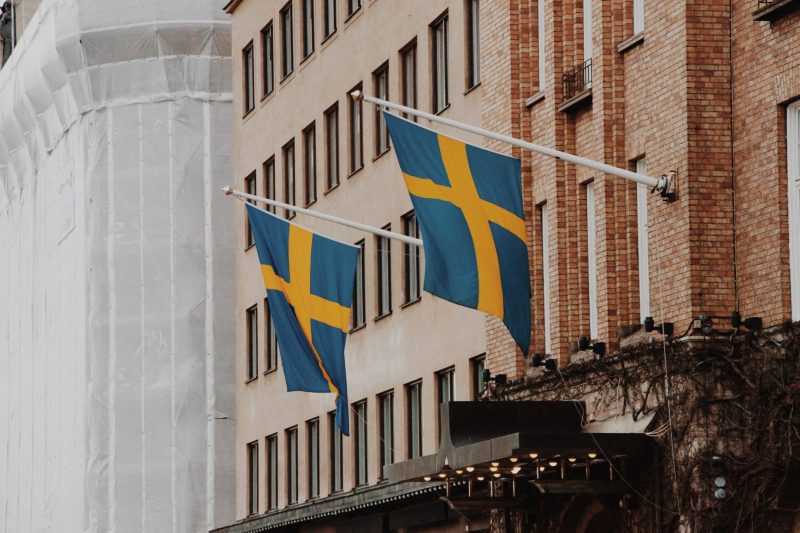
Sweden flag
FAQs
Here are some frequently asked questions (FAQs) about what to wear in winter in Stockholm, Sweden.
Do I need heavy winter boots in Stockholm?
Yes, you should wear insulated and waterproof winter boots with good traction. They are essential for keeping your feet warm and dry, especially in snowy or slushy conditions.
Should I pack a heavy winter coat?
Yes, a heavy, insulated coat is recommended, especially if you plan to spend extended time outdoors. Ensure it’s waterproof or water-resistant to protect against snow and sleet.
How do I stay warm while still looking stylish?
You can achieve both warmth and style by layering effectively. Choose fashionable yet warm mid-layers and accessories like scarves, hats, and boots to add style to your winter wardrobe.
Are sunglasses necessary in winter?
Yes, sunglasses are important in winter, especially on sunny days when the sunlight reflects off the snow, creating intense glare. They protect your eyes from UV rays and glare.
Can I wear jeans in Stockholm’s winter?
While you can wear jeans, it’s advisable to layer thermal or moisture-wicking leggings or long underwear underneath to add extra warmth, as jeans alone may not provide sufficient insulation.
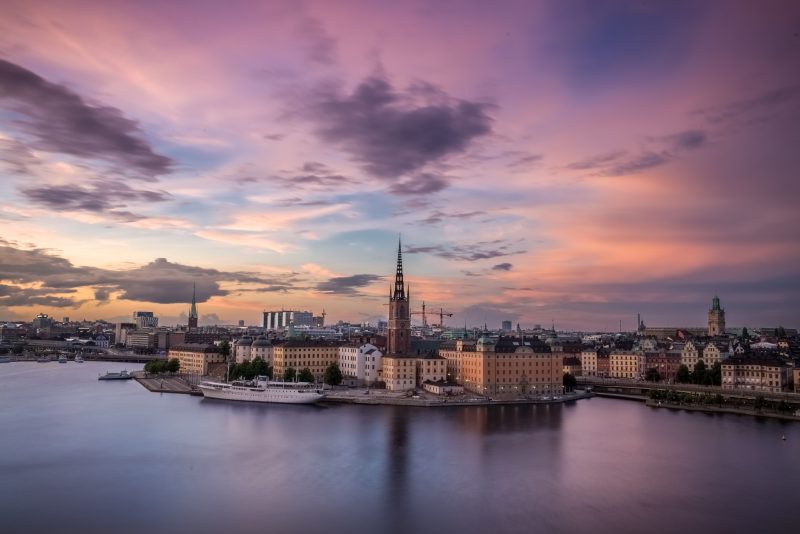
Stockholm, Sweden
Conclusion
In conclusion, dressing appropriately for winter in Sweden is essential to ensure your comfort, warmth, and enjoyment during your visit. Embrace a layering system with a moisture-wicking base layer, insulating mid-layers, and a waterproof and windproof outer layer to adapt to varying temperatures and conditions.
Opt for a heavy, insulated coat that is waterproof or water-resistant to protect against snow and sleet. A warm, waterproof winter jacket is essential. Wear insulated, waterproof, or water-resistant pants to keep your lower body warm and dry. Invest in insulated, waterproof winter boots with good traction to keep your feet warm and protected.
If you want to explore your options for winter clothing, check out the Kosha website or the shop in Bandra.
By following these guidelines and packing the appropriate clothing and accessories, you’ll be well-prepared to embrace the beauty of Sweden’s winter while staying warm, dry, and comfortable during your adventure. Enjoy your winter visit to Sweden!
This post is written by a Kosha member – Neeti Kapoor.
